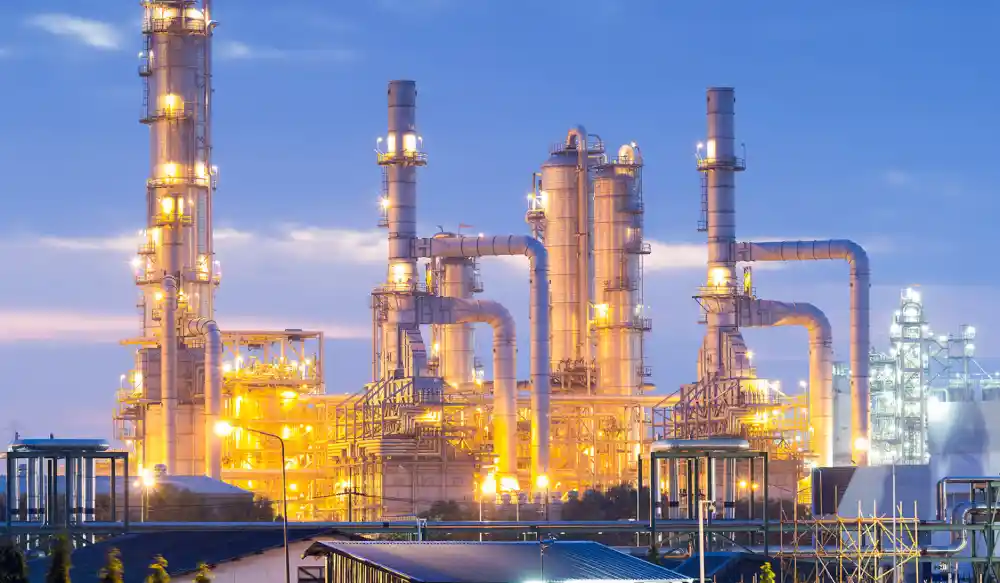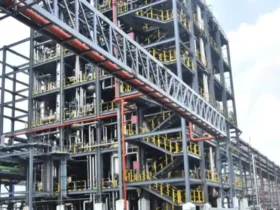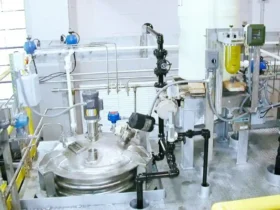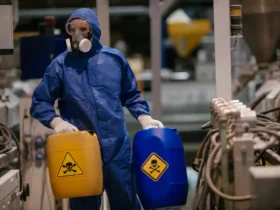
In today’s competitive industrial landscape, chemical processing plants are under constant pressure to increase output, reduce costs, and improve sustainability. One of the most effective ways to achieve these goals is by optimizing plant efficiency. Whether it’s through better energy management, smarter process control, or workforce training, enhancing efficiency not only boosts profitability but also ensures safer and more environmentally friendly operations.
This article explores practical strategies for optimizing efficiency in chemical processing plants, covering everything from equipment upgrades to digital transformation.
1. Understanding Efficiency in Chemical Processing
Efficiency in a chemical plant refers to the ability to convert raw materials into desired products with minimal waste, energy consumption, and downtime. It includes aspects such as:
- Process Efficiency: Maximizing yield and minimizing byproducts.
- Energy Efficiency: Reducing energy consumption per unit of production.
- Operational Efficiency: Enhancing reliability and minimizing downtime.
Achieving high efficiency involves continuous evaluation and improvement of plant processes, equipment, and operations.
2. Energy Management
Energy costs are a major component of chemical processing expenses. Improving energy efficiency can significantly reduce operating costs.
- Conduct Energy Audits: Regular audits help identify areas of excessive energy use, leaks, and inefficiencies.
- Heat Recovery Systems: Use waste heat from exothermic reactions or exhaust gases to preheat feedstock or generate steam.
- Variable Frequency Drives (VFDs): Installing VFDs on pumps and motors allows for precise speed control, reducing energy waste.
- Insulation: Proper insulation on pipes and tanks prevents heat loss and improves temperature control.
3. Process Optimization
Chemical processes can often be optimized to reduce waste, increase throughput, and improve quality.
- Process Simulation Tools: Software like Aspen Plus or CHEMCAD can model and simulate processes to find optimal operating conditions.
- Reaction Optimization: Adjusting parameters such as temperature, pressure, and reactant concentration can improve conversion rates and selectivity.
- Catalyst Improvements: Using more efficient catalysts can accelerate reactions and reduce energy requirements.
- Inline Monitoring: Real-time data collection and analysis allow for immediate adjustments and prevent deviations.
4. Preventive and Predictive Maintenance
Unscheduled downtime can be costly. Regular maintenance and predictive technologies help keep equipment running smoothly.
- Preventive Maintenance: Scheduled inspections and part replacements prevent failures before they occur.
- Predictive Maintenance: Technologies like vibration analysis, thermography, and AI-based monitoring predict equipment failures before they happen.
- Lubrication Programs: Proper lubrication reduces friction and wear on machinery, improving performance and lifespan.
5. Automation and Digitalization
The rise of Industry 4.0 has brought smart technologies into chemical plants, enabling better control and decision-making.
- Distributed Control Systems (DCS): Automate plant operations for consistency and efficiency.
- SCADA Systems: Supervisory control and data acquisition systems allow for real-time process monitoring.
- Industrial IoT (IIoT): Sensors connected to the internet provide continuous data, enabling predictive analytics.
- Advanced Process Control (APC): Uses algorithms to optimize complex processes in real-time.
6. Training and Workforce Development
A knowledgeable and skilled workforce is crucial for efficient plant operation.
- Ongoing Training Programs: Keep staff updated on the latest technologies, safety protocols, and best practices.
- Cross-Training: Employees trained in multiple roles can fill in during absences and understand overall process flow.
- Operator Certification: Encouraging certification ensures standardization and competence.
7. Waste Reduction and Recycling
Minimizing waste not only helps the environment but also improves efficiency.
- Process Integration: Link processes so that waste from one step becomes the input for another.
- Material Balancing: Track inputs and outputs to identify areas of loss.
- Closed-Loop Systems: Recycle solvents, water, or other materials within the process.
- Byproduct Utilization: Find secondary markets or internal uses for byproducts.
8. Benchmarking and Continuous Improvement
Regular performance evaluations are key to maintaining and improving efficiency.
- Key Performance Indicators (KPIs): Track metrics like energy consumption, yield, downtime, and waste generation.
- Benchmarking: Compare plant performance against industry standards or similar facilities.
- Lean Manufacturing Techniques: Apply principles like 5S, Kaizen, and Six Sigma to eliminate inefficiencies.
- Feedback Loops: Use data and operator input to refine processes continuously.
9. Safety and Compliance
Efficient plants are also safe and compliant. Poor safety practices can lead to shutdowns, accidents, and fines.
- Hazard Analysis: Regularly assess risks and update safety protocols.
- Automation of Safety Systems: Use sensors and interlocks to automatically shut down dangerous processes.
- Regulatory Compliance: Adhere to local and international standards for emissions, waste disposal, and worker safety.
Optimizing efficiency in chemical processing plants is a multifaceted approach involving technology, people, and process improvements. By focusing on energy management, process optimization, maintenance, automation, training, waste reduction, and continuous improvement, plants can significantly boost their performance.
Incorporating modern tools like digital monitoring, predictive analytics, and smart controls will not only enhance productivity but also ensure a more sustainable and resilient operation. Whether you are managing a small specialty chemical plant or a large industrial facility, adopting these strategies will help you stay competitive and environmentally responsible in the years to come.








Leave a Reply